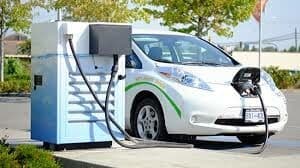EV Charging Stations Infrastructure
EV Charging Stations have been the infrastructure item on everyone’s mind lately. The current administration is pushing for adoption of electric vehicles, and without EV charging stations readily available, that can’t happen.
The city of Round Rock TX has announced their first purchase of Electric Vehicles, 9 Ford Lightning Electric Pick Ups on February 10,2022. These will replace conventional fueled vehicles ranging in age from 11 to 21 years of age. The city’s plan is to transition to an eventual all electric fleet to enhance operational efficiency, take advantage of long-term cost savings, and reduce environmental impacts.

With 6 months to a year to prepare…
What will it take for the city to prepare to implement these vehicles when they arrive in six months to a year? The news release indicates they are working to complete their first phase of EV charging stations at municipal facilities but says little else about preparing for their arrival.
The first purchase of electric vehicles is a big step for a municipality that cannot be undertaken without the appropriate due diligence. Much can be understood about how vehicles are used from tracking the vehicles to be replaced. An EV viability study using GPS tracking data to analyze activity suitable for electric vehicles. Things like if a single charge will provide enough power for the electric vehicle to accomplish a typical full day’s work are just the beginning.

It is also critical to understand how many situations and activities are routinely done that an EV is not practical or sufficient for and will still require a traditional gas combustion engine vehicle. To deal with those exceptions, you will still need to maintain some traditional fleet vehicles. Some of the softer costs may be harder to think through which is why GPS data is so important to empirical decision making.
Beyond all that…
Beyond all that, there are untold questions yet to be answered that could amount to substantial cost not being considered.
- How many electric vehicles are based at a single location, and will additional staff be required for afterhours rotation of vehicles to available EV charging stations or will one station per vehicle be required?
- Do vehicles go home with employees and how will that affect availability to charge, employee turnover or mileage payments?
- What if an electric vehicle gets stuck in gridlock traffic causing it to exhaust its charge prematurely. It won’t be possible to bring fuel to the vehicle, so we can expect this to result in towing expenses going up.
- Is there legal liability for driver safety if a vehicle cannot provide AC in the Arizona summer heat?
- How will a power outage (for instance after a hurricane) affect emergency management efforts? Will fossil fuel powered generators be required to power EV charging stations to maintain a fully charged electric fleet? Fuel rotation related expenses and generator service contracts all reduce the ROI for implementing an electric fleet.
- How will future battery disposal be addressed? We do not yet have sufficient infrastructure in place to safely dispose of or recycle high quantities of lithium batteries and…
Where does all that lithium come from?
A single EV uses roughly 22 pounds of lithium to construct the batteries essential to its operation. According to Energy Sage, currently only one lithium mine operates in the United States, the Silver Peak mine in Clayton Valley, Nevada; most of the global lithium supply is extracted in Chile and Australia. While some politicians are calling for increased domestic mining of the metal, at the end of May 2021, Reuters reported that the Biden Administration would supply the majority of lithium from ally countries, including Canada, Australia, and Brazil. What happens if the supply chain is disrupted? This would create shortages of new vehicles as well as replacement batteries.
Help With Planning for EV Charging Stations and More
The US Department of Transportation offers a handy checklist for planning infrastructure, but the final item on their list tells the full story consider additional needs. Reality is that there are always a few surprises, often very simple things that did not get considered. Until more municipalities take the risk to begin electrifying their fleets so we can all learn from their mistakes, there are many unknowns.
It will be interesting to follow the progress of the City of Round Rock after their electric vehicles are deployed. We applaud their forward thinking and green goals, but it remains to be seen if some of the financial savings and reduced carbon emissions will be offset by unforeseen costs and unplanned fossil fuel consumption in the long run.














